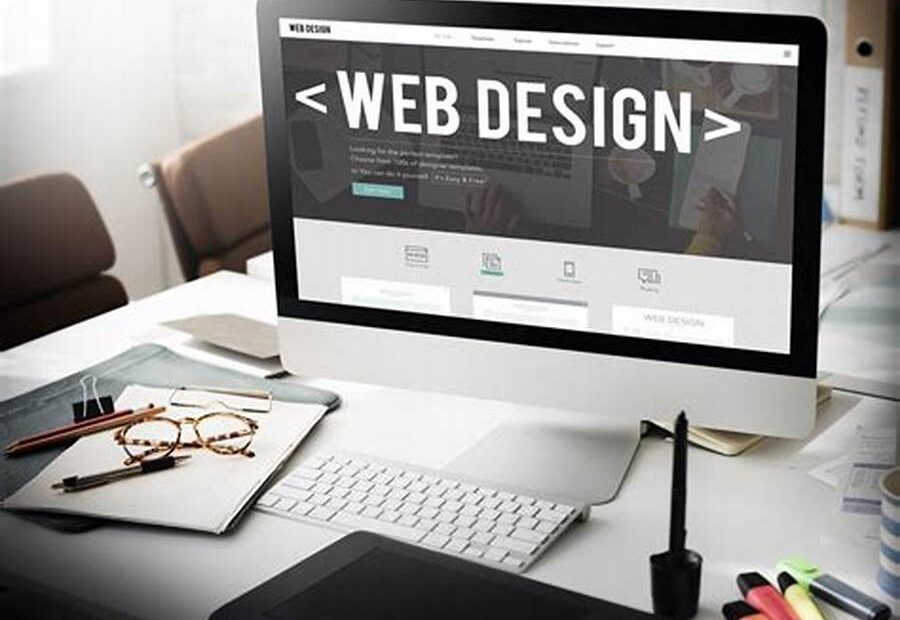A number of major motifs that combine technology improvements with a nod to historical aesthetics come to light as we anticipate the trends in web design for 2024. With an emphasis on interactive components, visual appeal, and user experience. These trends demonstrate a dynamic shift in the way designers approach the production of websites. This article will discuss the top web design trends for the year 2024.
1. Skeuomorphism and Parallax Scrolling
Skeuomorphism, the design technique that imitates aspects seen in the real world, is returning because it provides a recognizable and easy-to-use interface. This design aesthetic imitates real-world counterparts in feel, look, and functionality. It makes use of components like switches, buttons, and dials to give users a comfortable and simple experience. The over-digitization of our life triggers an emotional reaction in us, drawing us to designs that evoke a pre-digital era. In addition, parallax scrolling is making a comeback. This method, which involves varying the speed of foreground and background content, is returning with the addition of live and video content to create a more dynamic visual experience.
2. Kinetic Typography and Micro interactions
Kinetic typography, which is animated text that draws attention, is becoming increasingly interactive and essential in designs that emphasize narrative. It is anticipated to become a crucial component, particularly for campaigns and landing pages. User engagement is being increased by the evolution of micro interactions, which are tiny interactive features that react to user activities and are becoming more context-aware and personalized.
3. Thumb-Friendly Mobile Navigation and Intelligent Content Loading
As more people use mobile devices, having navigation that is easy on the thumbs is becoming crucial to improving user experience. This method puts menus and navigation bars at the user’s thumb’s fingertips. Furthermore, to improve website efficiency and user experience, intelligent content loading strategies like endless scrolling and lazy loading are being used.
4. Accessibility and Inclusivity
It’s clear that accessibility and diversity are becoming more and more important in web design. In order to make websites accessible to all users, new standards and technologies are being adopted; this trend is anticipated to last past 2024.
5. 3D Experiences and Retro/Nostalgic Designs
With companies like IKEA and Puma already utilizing this technology, 3D sites design provides users a more participatory feel of the business and its products. In addition, nostalgic and retro styles are becoming more and more popular, acting as a counterbalance to the abundance of websites created by AI.
6. AI-Powered Accessibility and Interactive Elements
AI-powered screen readers and keyboard navigation aids, for example, are greatly enhancing web accessibility. In order to keep users interested and engaged, interactive elements are being included, providing a more interactive browsing experience.
7. Dynamic Layouts and Neon Glows
Conventional website layout designs are changing to become more dynamic, giving users greater freedom to explore the website and improving the user experience. Additionally, neon glows are returning, bringing color and appeal, particularly to headers for websites.
8. Semi-Serif Fonts and Gradient Tones
The balance that semi-serif typefaces provide between modernism and elegance is making them more and more popular. They provide digital interfaces a human element. According to Coalition Technologies, gradient tones, which have gained popularity over time, are still a crucial component of web design and are utilized in a variety of elements, including buttons and graphics.
9. Handmade Illustrations and Intricate Designs
Using original artwork on websites is becoming more and more popular as a way to engage visitors and foster trust. Additionally in style are detailed graphics that instantly engage consumers through giving designs depth and authenticity.
In conclusion, the web design trends of 2024 showcase an intriguing fusion of user-centric design principles, technical advancement, and a return of nostalgic features. These trends demonstrate how web design is always changing. With the goal of producing user-friendly, visually appealing, and engaging digital experiences.
